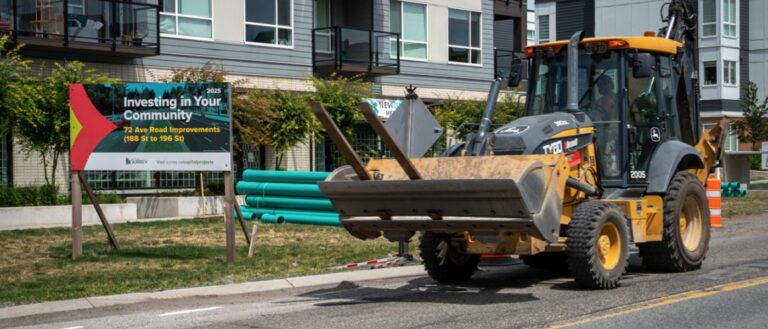Atomic Energy of Canada Limited (AECL), Canada’s nuclear Crown corporation, and Canadian Nuclear Laboratories (CNL), Canada’s premier nuclear science and technology laboratory, welcomed a number of special guests to the Chalk River Laboratories to celebrate the opening of the Science Collaboration Centre, a newly-constructed office complex at the campus.
Scheduled to open its doors to approximately 450 CNL employees and partners this fall, the new six-storey, 9,500 m2 facility will serve as the central planning and collaboration space for the company’s science and technology program. Constructed using mass timber products sourced from within Canada, the innovative and sustainable new facility features modern office space, 44 meeting rooms, collaborative flex spaces, a university-style auditorium with 200 theatre-style seats, a welcoming library space and a roof-top terrace.
“This innovative and creatively stimulating space will enable collaboration with our international and academic partners, and work to foster nuclear science innovation and research. That makes the Science Collaboration Centre a vital part of our success and of our mandate to drive nuclear innovation,” said Fred Dermarkar, president and CEO of AECL. “I am thankful to all who worked to bring this important project to fruition, you have delivered a cutting-edge, sustainable building that will no doubt be the site of innovations in nuclear science.”

“The Science Collaboration Centre is a major facility in the revitalization of the Chalk River Laboratories campus, and will provide CNL with a modern, flexible and dynamic collaboration centre to plan and pursue our research,” commented Joe McBrearty, CNL’s president and CEO. “It is also one of a series of new buildings made using mass timber products sourced right here in Canada, a renewable resource that reduces the carbon footprint of the Chalk River Laboratories campus. Overall, I want to thank AECL and the Government of Canada for their support, and the hundreds of employees and contractors who worked so hard to bring this centre to life.”
“In our fight against climate change, we need to use every tool in the toolbox to lower emissions,” commented Jonathan Wilkinson, Minister of Energy and Natural Resources. “Canada’s expertise in the nuclear sector is clearly reflected by the work of both CNL and AECL. The new Science Collaboration Centre – built from sustainable materials – is a step towards a revitalized Chalk River site, a location that has been at the centre of our nuclear history for decades.”
The Science Collaboration Centre is one of a series of new ‘enabling’ buildings that have recently been constructed at the Chalk River Laboratories site to revitalize the campus, thanks to a $1.3 billion investment over ten years from AECL on behalf of the Government of Canada. Together, the three new non-nuclear buildings use approximately 3,750 m3 of mass timber as structural material, sequestering carbon that is equivalent to taking 800 gas-powered cars off the road or the energy from 400 homes in a year. The Science Collaboration Centre was also constructed using strategies that include sustainable site development, water and energy efficiency, environmentally-friendly materials selection, and indoor environmental quality.
This and other new buildings at the Chalk River Laboratories are part of a ten-year capital program, started in 2016, that is designed to transform the Chalk River Laboratories through the revitalization of essential site infrastructure and a significant investment in new, world-class science facilities. In addition to the Science Collaboration Centre, a state-of-the-art research complex is under construction, a new two-storey industrial-use support facility was recently inaugurated, a new site entrance building is now operational, and several science facilities have been opened in recent years, including a brand new hydrogen laboratory complex, a new materials research laboratory, and a new tritium laboratory.
Major investments have also been made into infrastructure improvements for the campus, including new domestic water and natural gas service, a modern sanitary sewage treatment facility, and a system to more effectively manage storm water.
Featured image: Scheduled to opens its door to approximately 450 CNL employees and partners this fall, the Science Collaboration Centre is a new six-storey, 9,500 m2 facility that will serve as the central planning and collaboration space for the company’s science and technology program. (CNL)











